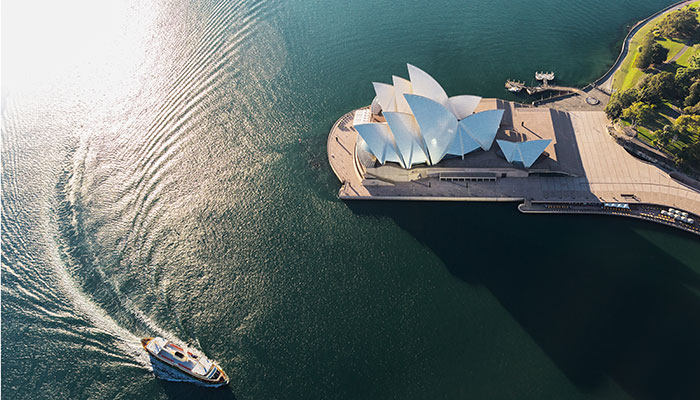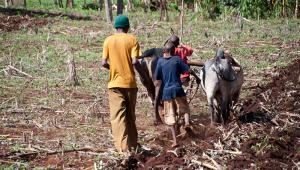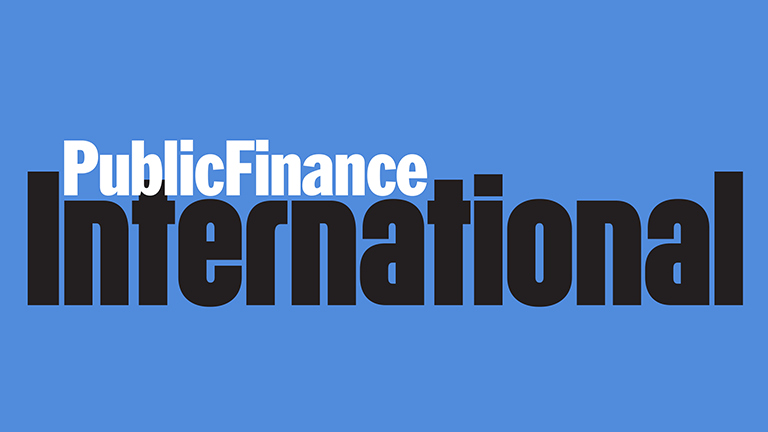“It’s not a hard view to come to work to,” Jon Blackburn admits cheerfully. His office, high up in the ‘sails’ of the iconic Sydney Opera House, overlooks the famous harbour and bridge.
“I’ve been here a year and never tire of walking on the site and just admiring the building. Every day I see something different,” says Blackburn [pictured right], who has been chief finance officer of the Sydney Opera House since November 2017.
PF caught up with him – although, sadly, not in person – to get a sense of what it’s like to oversee the finances of such a prestigious public asset.
It is a well-timed interview. Sydney is hosting the four-yearly World Congress of Accountants in November this year, while the opera house itself celebrated its 45th birthday in October. It is just at the midpoint of its Decade of Renewal, a major programme of works to make the site fit for the 21st century.
Sitting on Bennelong Point in Sydney Harbour, the opera house was designed by Danish architect Jørn Utzon, although he quit the project before completion and never returned to Australia to see his creation. In 2007, a year before Utzon died, Unesco designated it a World Heritage site, praising its “unparalleled design and construction”, and hailing it as a “daring and visionary experiment”.
Constructed from concrete and granite, it houses six internal venues of varying sizes, and its forecourt is also used for outdoor concerts. It is closed for only two days a year and presents more than 40 shows a week. Seven major performing companies are resident there, including Opera Australia and the Sydney Symphony Orchestra, but it has also recently played host to Ice Cube, Solange and Sam Smith and put on talks by the #MeToo journalist Ronan Farrow and US military whistleblower Chelsea Manning.
Given its relative youth – it is the youngest site on Unesco’s World Heritage List – it is remarkable how quickly the opera house transformed not just the image of Sydney but of Australia itself. It is now the country’s number one tourist attraction.
Blackburn says Sydney Opera House has become a brand as much as a cultural attraction – something that helps in attracting corporate partners.
“We’re now one of the leading Australian brands on Facebook in terms of engagement,” he tells PF. “Our digital reach is nearly 300 million people.”
It’s part performing arts venue, it’s part tourism venue, it’s part food and beverage site and it’s a building site for approximately A$300m of capital works
The opera house, he says, is not just one thing. “It’s part performing arts venue, it’s part tourism venue, it’s part food and beverage site and it’s a building site for approximately A$300m of capital works.”
The opera house is owned and funded by the New South Wales government and the state’s auditor general signs off the accounts. The NSW government delegates management and governance duties to a trust, and then down to the executive team. “It flows down through that structure and we present up to various committees who ensure things are done properly,” Blackburn explains.
The site generates most of its revenue itself through venue hire, programming, ticketing, leasing space to food and drink operators and running tours. An annual state government endowment equivalent to between 11% and 15% of operating revenue makes up the difference.
The site’s size and popularity means it doesn’t need a huge subsidy. “We’re probably one of the hardest-working arts venues in the world in terms of the performances we run,” Blackburn says.
“But then the building itself is very expensive to maintain and to do capital works on, so we get an annual grant of approximately A$30m for strategic asset management to keep the building going.”
The Decade of Renewal project is backed by A$264m from the New South Wales government, as well as A$45m of the opera house’s own reserves, to fund major upgrades and improvements. This includes replacing the machinery in the Joan Sutherland Theatre, one of the complex’s largest auditoriums where operas and ballets are staged.
The theatre is now safer and more accessible, Blackburn says, and the orchestra pit has been modernised. “The sound is a lot better and the musicians can now see and hear one another.”
Work has also been under way to make the site greener, and the team has hit its target of going carbon neutral an impressive five years ahead of schedule. Lights are low emission and seawater is now used to chill and air condition the building. “We’re actively focused on sustainability as well as the footprint we leave behind.”
Any damage to the building, whether accidental or malicious, would be devastating, so “safety and security is huge for us”, Blackburn says.
As well as keeping a vigilant eye on changing international threat levels, the opera house makes use of intelligent fire systems and uses technology to collect data on the building and help focus maintenance efforts where they are needed.
The opera house has also been working hard to dispel any idea that it’s a stuffy and elite institution. While its resident companies may focus on what might be thought of as high art – opera, ballet, theatre and symphony music – it has its own Sydney Opera House Presents programme, which brings in contemporary acts and family-friendly shows that appeal to new audiences.
“We’re trying to make it more about everybody, and we’re trying to use our digital technology to broaden the reach, including streaming shows via Facebook Live,” Blackburn says.
I can provide the quantitative analysis, but we make qualitative decisions about what we’re doing and what we invest in
There’s also a dedicated public service mission. “It’s as much qualitative as it is quantitative,” he says. “I can provide the quantitative analysis, but we make qualitative decisions about what we’re doing and what we invest in.”
Next year, the opera house will host a Vietnamese circus troupe but will forgo some performance revenue to allow local school children to see the show for free. “That reduces the overall profitability of the performance but adds a lot more value in opening up to a broader audience.”
After a career spent in private sector accounting, Blackburn says he is enjoying giving something back to his home city. He trained with Pricewaterhouse and spent the early part of his career there (including three years in the London office), largely carrying out financial institution audits. He then built a career in finance roles in banks working at Macquarie and Lloyds, before helping a family-run firm that designs and builds office space to develop a global presence.
He was looking for something different when the opportunity at the opera house came up. As well as CFO, Blackburn has been given responsibility for all corporate services, so has taken on a broader role managing the risk and change to the business.
“It’s a fascinating place to work and it’s great that people are so engaged,” he says. “People work here because they want to work here.” Blackburn has also been enjoying the opportunity to take his family along to productions and make the most of the “real mixture” on offer.
The move to the public sector has been less of a culture shock than it might have been, he says. The trust structure means working for the opera house is not the same as working for a government department, and the staff are very engaged with the asset, which gives it more of a commercial feel.
“It’s quite self-contained, so that means you can make quite a lot of decisions without having to go outside the organisation,” says Blackburn. “The qualitative side, the purpose of the opera house, is the biggest difference.”
Past and present: historic site with an eye to the future
Keeping score
The Sydney Opera House opened its doors to the public in 1973. Its famous curves came from the mind of Jørn Utzon, who, in 1957, won an international competition to design a national opera house for Bennelong Point, a headland in Sydney Harbour.
The striking building cost A$100m to construct, with funds raised through a state lottery – equivalent to A$1bn in today’s money. The last valuation from Deloitte puts the value of the precinct at A$4.6bn, although this is due to be updated shortly. The site, which employs 1,000 people, generates over A$300m of revenue each year, of which the opera house share is around A$125m. This income is topped up
by a grant from the New South Wales government of approximately A$13m. Additional capital grants pay for upkeep and maintenance.
History and harmony

Sydney Opera House occupies a site of great historic and cultural significance. Bennelong Point is named after Bennelong, an aboriginal elder who helped broker dialogue between First Nations people and early British settlers.
Each evening is Badu Gili: the opera house sails are lit with First Nations art exploring ancient stories in a seven-minute projection [see right].
Badu Gili means ‘water light’ in the language of the Gadigal people who originally owned Bennelong Point, and which they regard as a sacred place and call Tubowgule - ‘where the knowledge waters meet’.
“It’s a historic site,” says Blackburn. “And it’s a future-looking site in terms of how we take it into the 21st century.”














